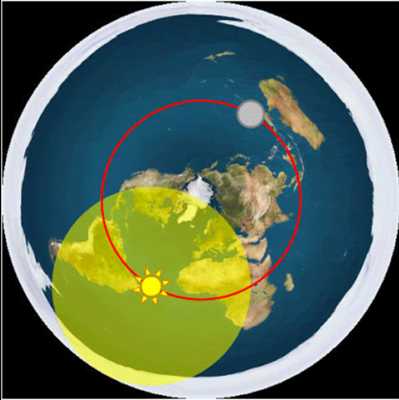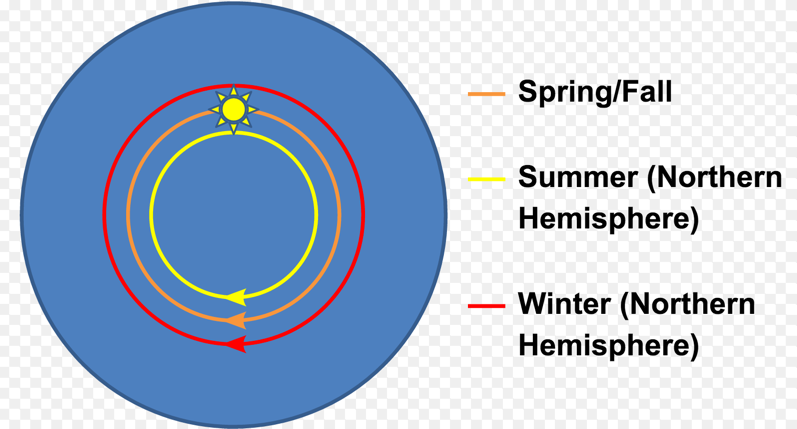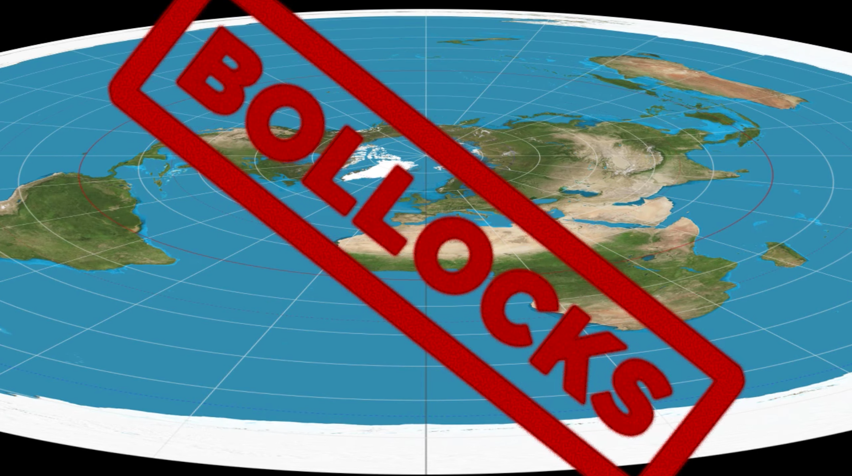Anthony Harburn - Earth Shape Deception.. Flat. I Think.. Flight Path of the ISS
Dear Anthony Harburn,
Fact check = You FAIL
Your claim, "the ESA live stream ISS tracker displays something different when the PC date/time is changed. It should not do that.
Your experiment is invalid because YOUR VIDEO DOES NOT SHOW the ISS latitude, longitude, altitude, speed and time/date (GMT) information at the very bottom of the screen, after each PC change that you made.
Because of that its unknown what live stream was really loading to show you.
Note: Later on in the video you do show the bottom date/time bar, but not at this point.
Perhaps your PC brought up a prior cache version of that screen?
Maybe there is a bug in your PC operating system or in the live streaming software feed?
There could be many other explanations.
- - -
Fact check = You FAIL
Is this the link that you used?
(http://www.ustream.tv/channel/live-is...)
Right now for me I get "page not found" when I go to that URL.
- - -
Fact check = You FAIL
I visited site (http://www.esa.int/Our_Activities/Human_Spaceflight/International_Space_Station/Where_is_the_International_Space_Station) with my Apple Macbook pro, changed the computer date,
... and the ISS display DID NOT CHANGE FOR ME.
I suggest that you don't mess with your PC settings during a live stream session.
Instead, go to one of the regular internet sites that display the ISS current orbital data.
- - -
Fact..
The orbit of the ISS is inclined 51.65 degrees to the Earths equator. So whatever folks have been saying, the ISS never orbits close to either the north or south pole.
This nice animation shows the orbit of the ISS
ISS Orbit Animation | silent | 1080p
SpaceFX
https://www.youtube.com/watch?v=2Rc3rh9o-QE
Fact...
Yes, the ISS travels in an elliptical orbit (minimum mean altitude of 330 km and maximum of 410 km
- - -
Fact...
Because attaining orbit is a combination of getting through the atmosphere, getting up to the desired height, and getting the desired orbital velocity, (all while their mass is changing because they carry their fuel with them) rockets do not simply go straight up.
The rocket trajectory needs to start curving to match the contour of our globe Earth's shape.
To remain in a stable orbit, the rocket speed and vector direction must be tangential to the Earth's surface. That way, as the rocket moves in orbit, it falls due to gravity at the SAME RATE that the curved Earth surface falls away from it.
If the rocket went straight up, it would either escape the Earth gravity and simply go out into space, or just fall back to the Earth. It would never go into a stable orbit around the Earth.
- - -
The remainder of this video has too many errors to review at this time.
I suggest that you take an astronomy and physics 101 course, to clear up your misconceptions - unless you are intentionally presenting false information to sway video visitors.
- -
Update: May 17, 2020
The ISS photographed with a telescope from the Earth's surface...
ISS High Magnification Tracking - 5/17/2020, by Astronomy Live
https://www.youtube.com/watch?v=pjzAWvQvbmg
Tracked with SatTraker:
https://github.com/AstronomyLiveYt/Sa...
Music: Between the Rings by Stellardrone Filmed with an 8" Meade LX200 Classic with a 2x barlow (f/20) and Canon T5i. Tracked using SatTraker. The video frames were then stabilized and stacked in a 5 frame rolling average using a custom Python script which also added the time code, altitude, azimuth and range numbers to the video based on the orbital elements of the space station.

- - -
Update: July 4, 2020
One of the Best Pictures Ever Taken of ISS from the Ground. You Can Even See the Canadarm2, by Nancy Atkinson of universetoday.com
(https://www.universetoday.com/146830/one-of-the-best-pictures-ever-taken-of-iss-from-the-ground-you-can-even-see-the-canadarm2/)
Excerpt:
"Astrophotographer Thierry Legault is renowned for his amazing shots of spacecraft transiting the Sun. He’s now outdone even himself.
On June 24 and 25, 2020, Legault captured the International Space Station passing in front of the Sun with such clarity, even the station’s robotic arm, the Canadarm2, is clearly visible. The docked SpaceX Dragon capsule can also be seen. These latest masterpieces from Legault are the most detailed ISS images captured from Earth yet.
Legault credited some new equipment for the increased clarity.
“My new CFF apochromatic triplet 8″ refractor I bought 2 weeks before the shots seems to be optically very good,” he told Universe Today via email. “Focusing is critical and is always a challenge, especially nowadays because there are no sunspots. I had to focus on the solar limb, and fortunately, at the distance of the ISS, there’s no difference in focusing between the Sun and the ISS.”
Legault said the camera he uses, and Olympus E M-1 II, has the fastest continuous shooting: 60 frames per second in 20 Mpix Raw mode. But he has less than a second to capture the space station’s pass in front of the Sun....."
(Please read this full article at the URL posted above)
-
Website of Thierry Legault - http://www.astrophoto.fr/
YouTube video at - https://www.youtube.com/watch?v=Bku76sBWwME
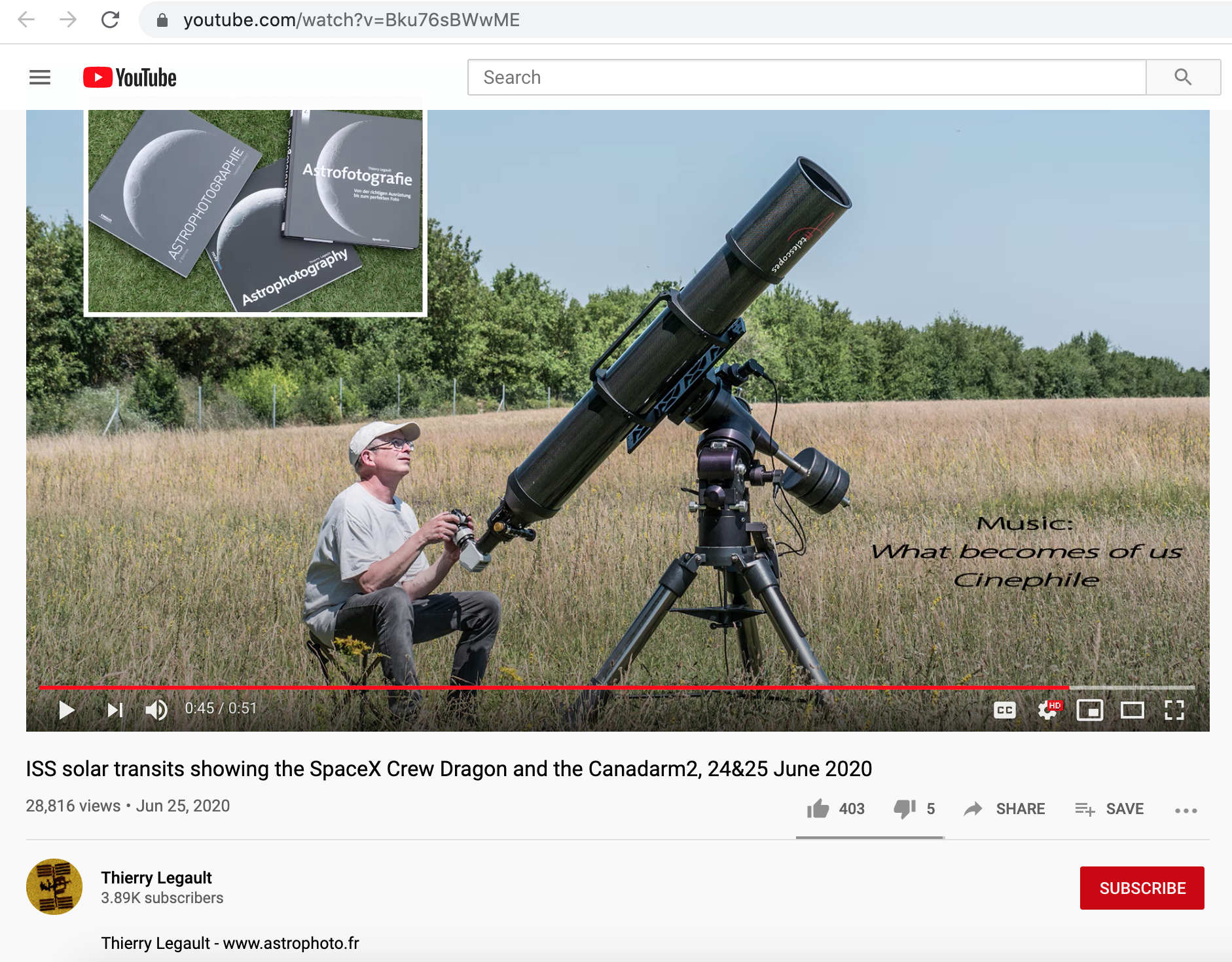
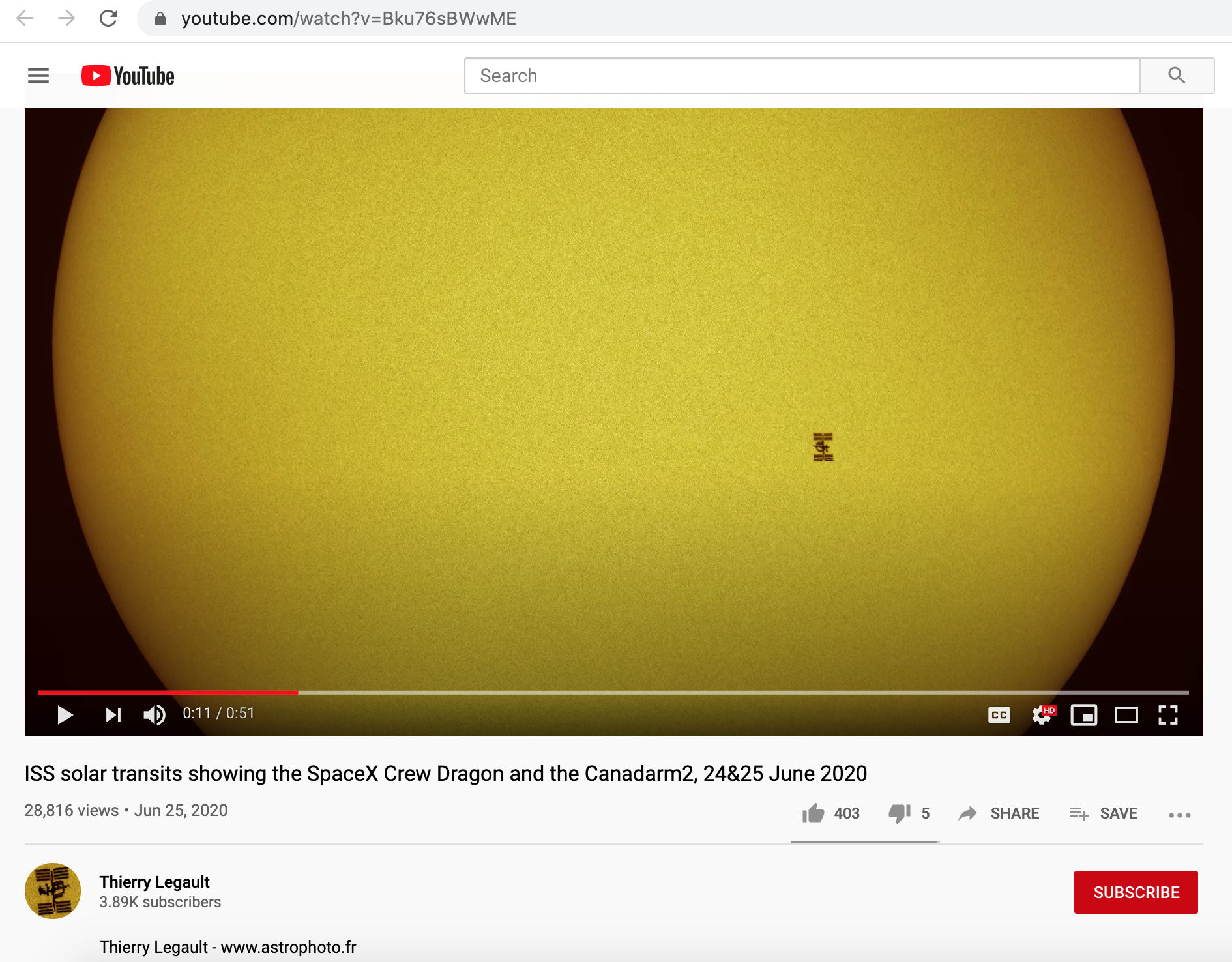
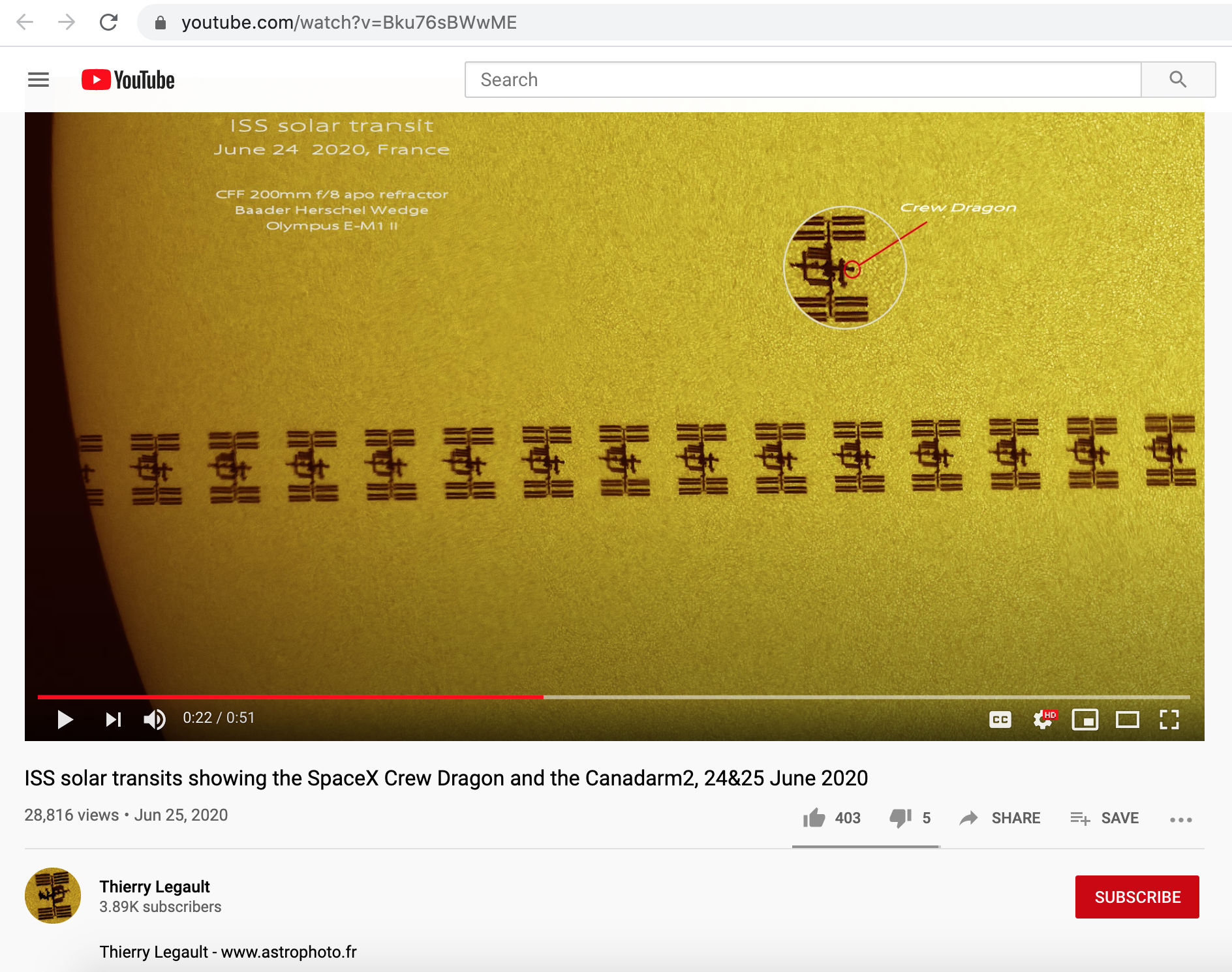
Solar transit of the ISS on June 24, 2020 showing the SpaceX Crew Dragon docked to the station. The multiple exposures were taken in less than a second, at 60 frames per second. Credit and copyright: Thierry Legault.
- - -
Published on – April 3, 2017
Discussion at - https://www.youtube.com/channel/UC7ipUKERU0tzYFxALJBli4A/discussion
Video at - https://www.youtube.com/watch?v=umJSgpxdL2A
Our home page all articles - http://flatearthlunacy.com
kind regards, JonahTheScientist




